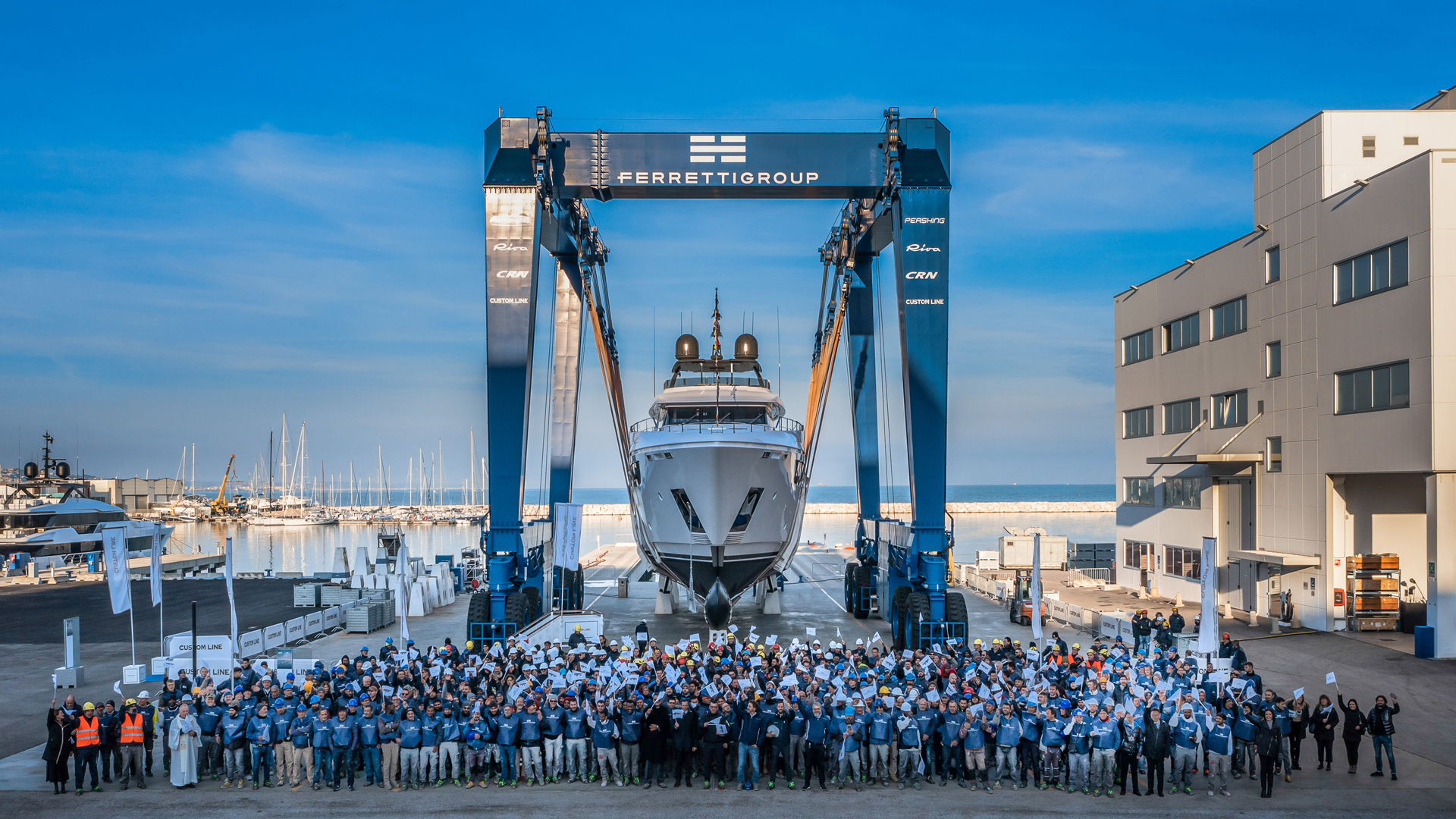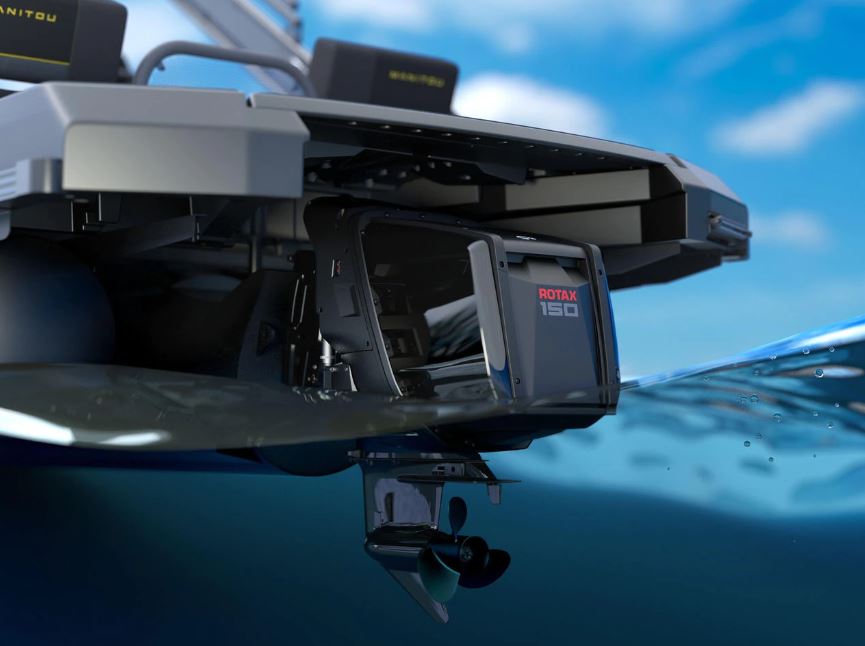
7 of the best boating news and trends of 2022
Let’s start the year by taking a look at the one that has passed
Industry observers all agree that 2022 was the year boating really took off – we’ve even written about the confluence of factors leading to the increase in interest for this watery activity. Sure, there were many difficulties faced by the industry like supply-chain issues, but by and large the year has been an absolutely good one for boating, and not just because shipyards are selling out their inventory. This year we saw the launch of many yachts, but in this article we’re going to look at the interesting trends and innovative technologies that came out over 2022, which we think you should really know about as well.
BRP’s revolutionary Rotax outboard engine

When BRP (a Quebec-based company) announced their new Rotax engines in August, the boating world took an amazed collective gasp. Their new power unit is designed horizontally and not vertically like normal outboards, which allows the unit to be placed below the transom and not on it. As you can imagine, the benefits are many. Transom space is freed up (a common complaint on boats with outboards), and since most of the engine framework is underwater, it is quieter as well. Right now only 115 hp and 150 hp configurations are available for lighter yachts, but we certainly see BRP expanding the range for boaters with a penchant for power.
BIG power is in…
Still somewhat on the same topic; yachts, like cars, are getting more and more powerful as the years go by, and early last year Mercury announced its latest monster powerplant: the V12 600 hp 7.6-litre Verado outboard engine. It’s a big boy of course, and it was previously thought that such a large unit can’t be fitted on a boat, but Mercury has designed its gearcase to pivot underwater independently of the rest of the engine to cleverly save space up on the transom.
… and so is electric power

Around the same time, Mercury also announced its serious foray into electric power units, with the news of its Avator electric outboard motor. Though the motor is interesting (we’ll get to that in a second), the announcement of electrification by Mercury Marine, owned by Brunswick Corporation who is one of the big players in the industry with other big names like Sea Ray, Boston Whaler, Harris, Lund, Bayliner, and Princecraft under them, signifies a bold new era for these group of companies. Going back to the engine: the most interesting part of Avator is its fast-charging battery pack that can be removed from the transom fitting to be conveniently charged elsewhere, and the motor will have 5 variations.
Hydrofoils have floated back into favor
Hydrofoils have been on the fringes of the yachting scene for years now but have never really caught on, that is, until 2022. The world is increasingly headed in the direction of sustainability, which is why hydrofoils, with their ultra-efficient hulls, are in vogue. The current (pun intended) limitation of electric propulsion technology is energy storage, and so having a super-efficient hull that will maximise the available energy is the good solution for electrification, until a better one comes along.
Speedy power catamarans
Power cats are not a new concept, but power cats that can go fast are a new trend that we saw last year. Due to the inherent advantages of having two hulls, like stability and fuel efficiency, power cats are usually used for blue-water yachting, but increasingly we are seeing catamarans of a smaller size that can hit speeds in excess of 20 knots when the throttle is pushed, and can still go the distance when they go at more sensible speeds.
Convenience is key

It’s official now – very few people are roughing it out on their boats these days. In fact, we even wrote about some equipment on your boats that you should update or get that will make life on the water better. Convenient technologies like digital switching and smartphone integration used to be available only on larger luxury yachts, but they can be easily added onto all kinds of boats today. The convenience and ease that are in smart homes and smart cars have finally made it onto yachts as well, at a price point that is no longer considered expensive.
Superlative superyachts

Once upon a time, a vessel of 80 feet and more is considered a super yacht. Today, anything less than 100 feet is just a very large yacht. As the uber rich increase in wealth, so too do their yachts increase in size. It’s not just that too, the layout of today’s superyachts is changing too. Main deck master suites are getting more popular, as are privacy panels that can integrate or separate a space. There is also a trend of using loose furniture onboard instead of integrated or fixed ones, which gives their affluent owners the ability to set up the space or redecorate seasonally. Oh, and it’s not uncommon too today to see a 200-foot superyacht come with their very own support vessel, which is usually another superyacht of around 100 feet.
Bonus story : Jeff Bezos vs historic Dutch bridge

The drama unfolded over a couple of weeks in early 2022. Jeff Bezos, Amazon founder and one of the richest people on Earth, commissioned a $500 million 417-foot superyacht from Oceanco, and when the project was nearing its completion, Bezos and Oceanco caught major flak when it was discovered that they requested Koningshaven Bridge, a historic bridge in Rotterdam, be dismantled to allow the yacht to launch into the city’s canal system. Following a major public outcry, the request was pulled back, and early in the morning of 2nd August 2022, the superyacht left the city, quietly, under the cover of darkness, to complete its construction in another yard down river. Winner: historic Dutch bridge.

